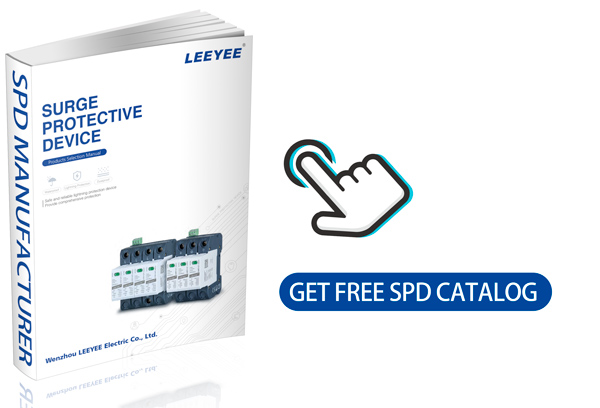Voltage spikes can damage your valuable electronics, leading to costly repairs or replacements. These surges, often caused by lightning strikes or power fluctuations, pose a significant risk. The solution lies in understanding surge arresters and their capacity to protect your devices effectively.
Surge arresters, also known as surge protectors, divert excess voltage away from electrical equipment, minimizing the risk of damage. Their capacity is often measured in joules, which indicates the amount of energy they can absorb before failing.
Understanding how surge arresters work and their capacity to handle electricity is crucial for protecting your devices. Let’s explore their functionality, factors affecting their performance, and how to choose the right one for your needs.
Índice
What Is a Surge Arrester?
A surge arrester is a protective device designed to shield electrical equipment from voltage spikes. These spikes can occur due to various reasons, including lightning strikes, power surges from the grid, or switching operations in the electrical system. Surge arresters typically use components like metal oxide varistors (MOVs) to absorb and dissipate excess energy, redirecting it away from connected devices.
When the incoming voltage exceeds a predetermined threshold, the surge arrester activates, allowing the excess electricity to flow to the ground instead of reaching sensitive equipment. This action helps maintain the integrity of devices such as computers, televisions, and home appliances, significantly extending their lifespan and reducing the risk of failure.
Understanding Surge Capacity
Surge capacity is commonly measured in joules, which quantify the amount of energy a surge arrester can absorb before it fails. Selecting the right surge arrester involves understanding these joule ratings.
- Low Joule Rating: A surge arrester with a rating of around 500 joules is typically suitable for smaller devices. However, it may not provide sufficient protection for high-value electronics.
- High Joule Rating: A surge arrester with a rating of 2,000 joules or more can handle larger surges, making it ideal for sensitive or expensive equipment.
Choosing a surge arrester that matches the joule rating to your devices ensures optimal protection against potential damage.
Factors Influencing Surge Arrester Capacity
Several factors influence how much electricity a surge arrester can handle effectively. Understanding these factors helps in selecting the appropriate device for your needs.
1. Design and Components
The design and quality of components used in surge arresters play a crucial role in their surge capacity. High-quality MOVs can absorb more energy and perform effectively over extended periods. The overall design, including heat dissipation mechanisms, also impacts performance during surges.
2. Tensión nominal
The voltage rating indicates the maximum voltage a surge arrester can withstand without failing. If the incoming voltage exceeds this rating, the device might not function correctly. Selecting a surge arrester with a voltage rating higher than the maximum expected voltage in your system is essential for adequate protection.
For instance, if your electrical system operates at 120 volts, you should choose a surge arrester with a voltage rating of at least 150 volts.
3. Type of Surge Arrester
Different types of surge arresters are designed for specific applications:
- Type 1 Arresters: Installed between the utility service and the building’s electrical system, protecting against external surges.
- Type 2 Arresters: Installed at the service entrance or branch panel, providing protection for internal surges.
- Type 3 Arresters: Installed at the point of use, such as near sensitive devices, offering localized protection.
The type of surge arrester selected significantly influences its ability to handle surges effectively.
4. Environmental Conditions
The operating environment affects a surge arrester’s performance. Factors like temperature, humidity, and exposure to dust or chemicals can impact longevity and effectiveness. For example, surge arresters exposed to high temperatures may degrade more quickly, reducing their surge capacity.
Choosing a surge arrester suitable for the environmental conditions of its installation site ensures optimal performance.
5. Frequency of Surges
The frequency and intensity of electrical surges in your area also influence the required capacity of a surge arrester. If you live in a region that experiences frequent thunderstorms or power fluctuations, it is advisable to select a surge arrester with a higher joule rating. This choice ensures that it can handle multiple surges over time without degrading.
How to Choose the Right Surge Arrester
Selecting the right surge arrester involves assessing your specific needs and considering several factors:
- Evaluate Your Equipment: Determine the total value and sensitivity of the devices you wish to protect. Higher-value electronics require higher joule ratings.
- Consider the Environment: Assess the installation location and any environmental challenges that may affect performance.
- Check Voltage Ratings: Ensure that the surge arrester’s voltage rating exceeds the maximum voltage of your electrical system.
- Research Types: Understand the different types of surge arresters to choose one that fits your application, whether for whole-house protection or localized safeguarding.
- Consult Manufacturer Guidelines: Always refer to the manufacturer’s recommendations to ensure compatibility and reliability.
Conclusión
Surge arresters play a vital role in protecting electrical systems from damaging voltage spikes. Their capacity to handle electricity, measured in joules, significantly influences their effectiveness. By understanding factors such as design, voltage rating, type, environmental conditions, and surge frequency, you can select the right surge arrester for your needs.
Investing in a high-quality surge arrester with an appropriate joule rating not only safeguards your valuable electronics but also enhances the overall reliability of your electrical system. Making an informed choice will pay off in the long run, ensuring peace of mind and protecting your devices from unexpected surges.
Acerca de LEEYEE:
Fundada en 2009, LEEYEE es un fabricante especializado en dispositivos de protección contra sobretensiones (SPD). Contamos con los certificados CE, CB, ISO9001 y TUV. Además, admitimos opciones de personalización para el aspecto del color, los parámetros y los logotipos. Si desea consultar catálogos de productos o realizar consultas, puede ponerse en contacto con nosotros por correo electrónico en devin@cnspd.com.

